Gather the shrimp and eggplant stir-fry ingredients
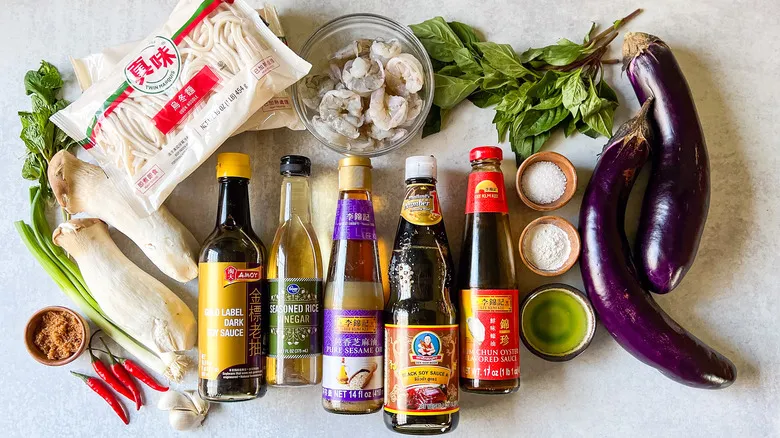
This recipe features large raw shrimp that have been peeled, deveined, and had their tails removed for convenience. Long Chinese eggplants and king oyster mushrooms contribute a hearty texture to the stir-fry. The udon noodles are partially cooked and frozen, making them quick to soften and incorporate into the dish. Thai chiles add a spicy kick, while fresh garlic, scallions, Thai basil, and mint enhance the aroma. You'll need cornstarch to coat the eggplant and a neutral frying oil with a high smoke point, like peanut or avocado oil. For the sauce, gather dark soy sauce, black soy sauce, rice vinegar, sesame oil, oyster sauce, and brown sugar. Kosher salt is used to brine the eggplant.
Step 1: Marinate the shrimp
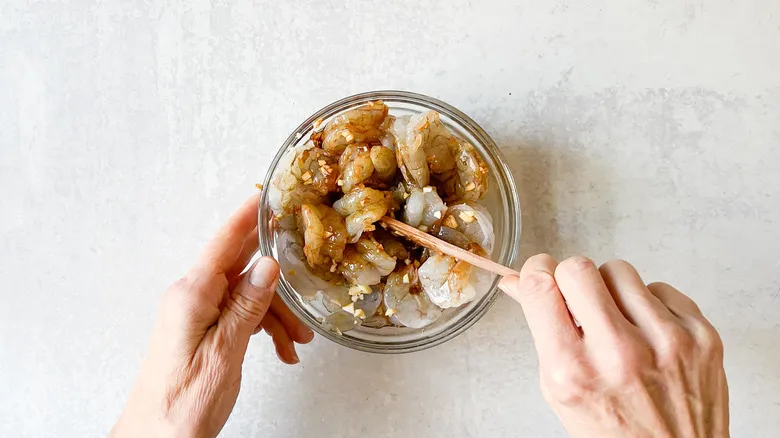
Combine the shrimp, 1 tablespoon of dark soy sauce, 1 tablespoon of sesame oil, and 1 minced garlic clove in a medium bowl, stirring until everything is well coated. Cover the bowl and refrigerate for 30 minutes to 4 hours.
Step 2: Soak the udon noodles

Put the frozen udon in a large bowl and pour hot water over it. Allow it to soak for approximately 5 minutes, then use chopsticks or tongs to gently separate the udon. Drain and rinse it under cold water.
Step 3: Toss the udon with soy and sesame
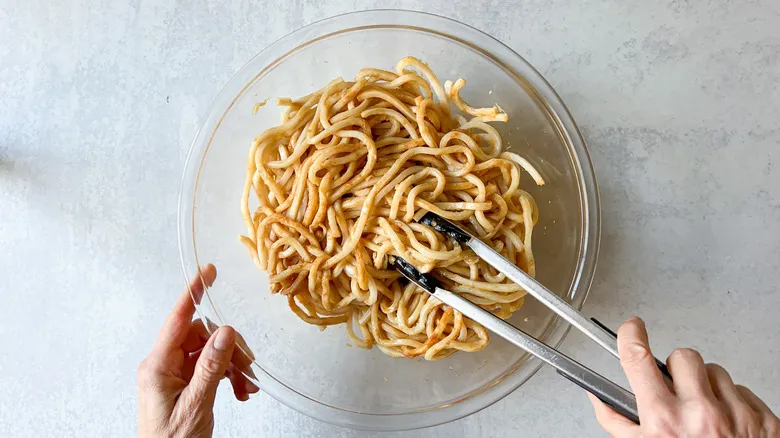
Place the udon back in the bowl and mix it with the remaining tablespoon of dark soy sauce and 1 tablespoon of sesame oil. Set it aside.
Step 4: Trim the eggplants
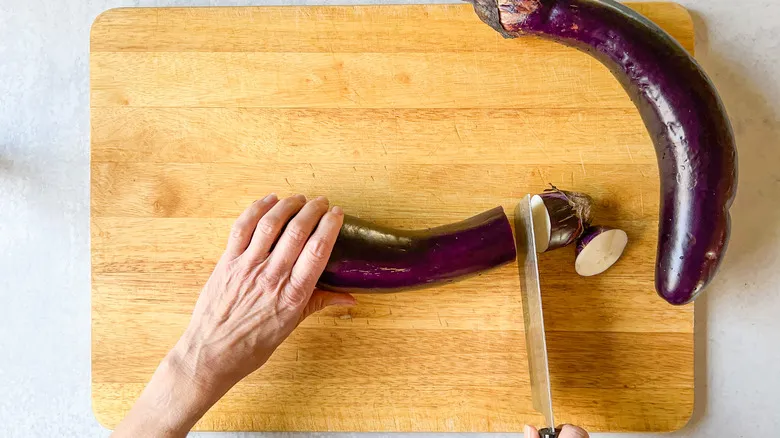
Trim the ends of the eggplants.
Step 5: Cut the eggplant into sections
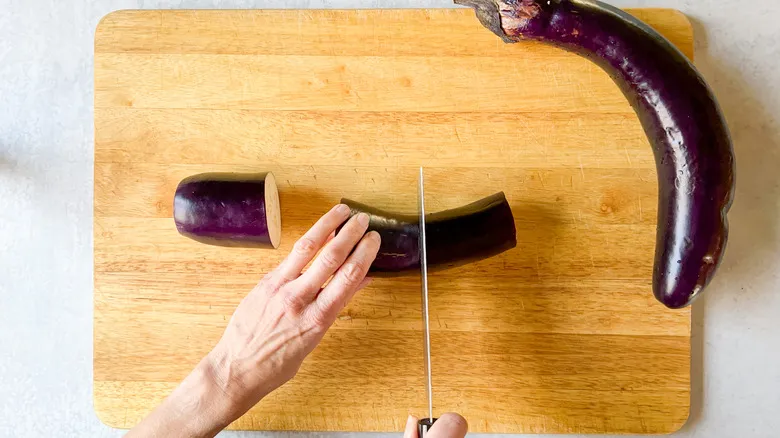
Slice the eggplants into sections that are 3 inches long.
Step 6: Halve each section
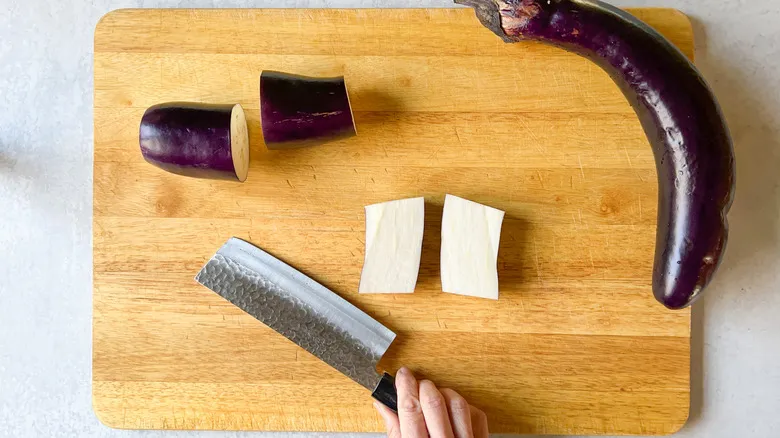
Divide each section vertically into two equal parts.
Step 7: Cut into pieces
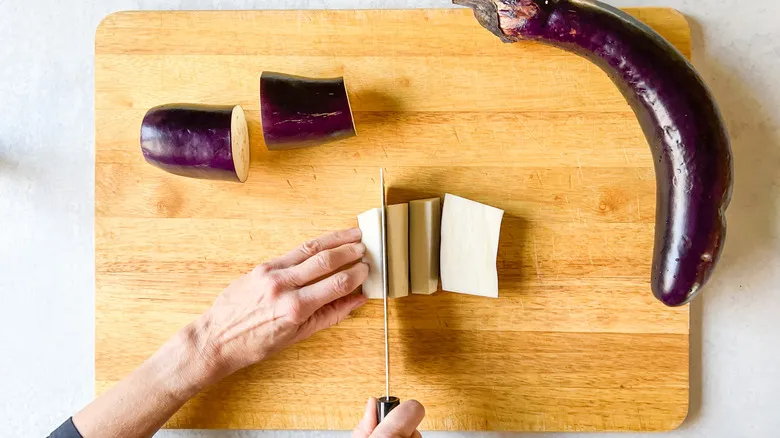
Slice each half into strips that are ½ inch wide.
Step 8: Cover eggplant with water and salt

Put the sliced eggplant into a large bowl and submerge it in 4 cups of cold water. Sprinkle in the kosher salt.
Step 9: Cover and brine the eggplant
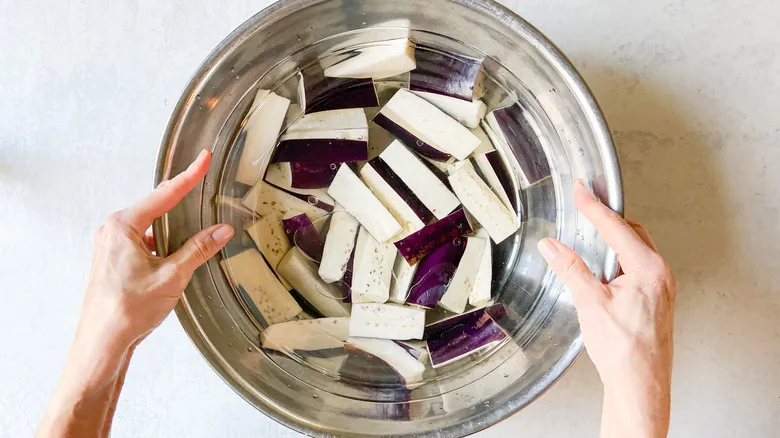
Place a plate or another heavy object on top of the eggplant to ensure it is fully submerged. Let it soak for 15 minutes.
Step 10: Mix the sauce
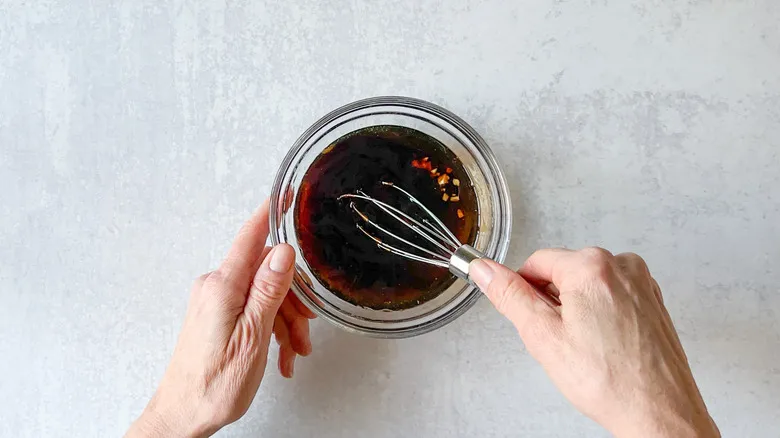
As the eggplant is soaking in the brine, combine the black soy sauce, oyster sauce, rice vinegar, brown sugar, the rest of the garlic, and the remaining sesame oil in a small bowl using a whisk.
Step 11: Drain and dry the eggplant

Remove excess moisture from the eggplant by draining it and then gently blotting it dry with a kitchen towel.
Step 12: Toss eggplant with corn starch
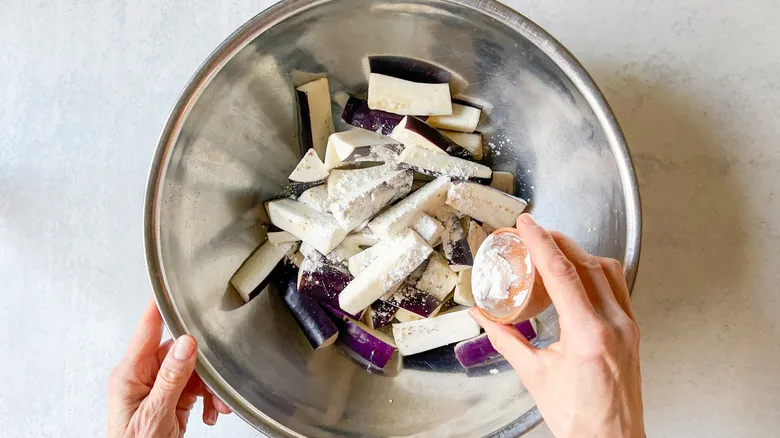
Place the eggplant back in the bowl and mix in the corn starch. Set it aside.
Step 13: Heat oil in a wok
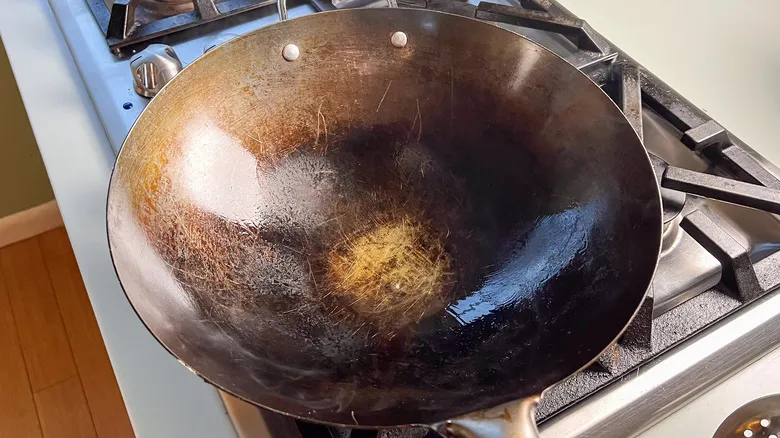
Preheat a large wok or sauté pan on high heat. Pour in 1 tablespoon of the cooking oil and heat until it shimmers.
Step 14: Saute the mushrooms
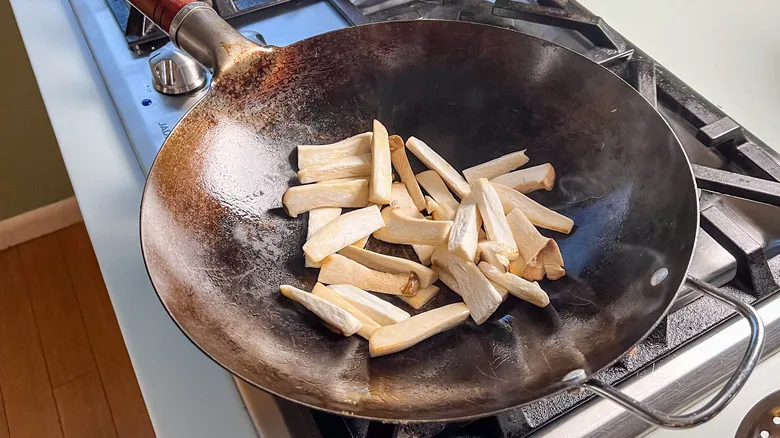
Incorporate the mushrooms into the wok and sauté until they turn golden brown and release their juices (approximately 5 minutes).
Step 15: Transfer mushrooms to a platter
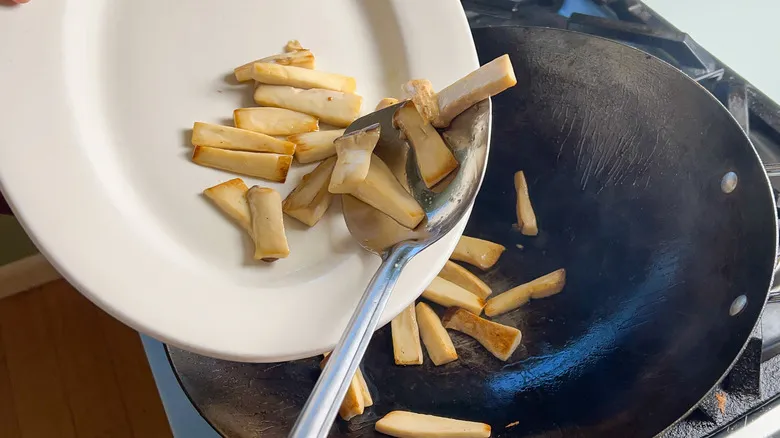
Move the mushrooms to a serving dish.
Step 16: Add more oil to the wok
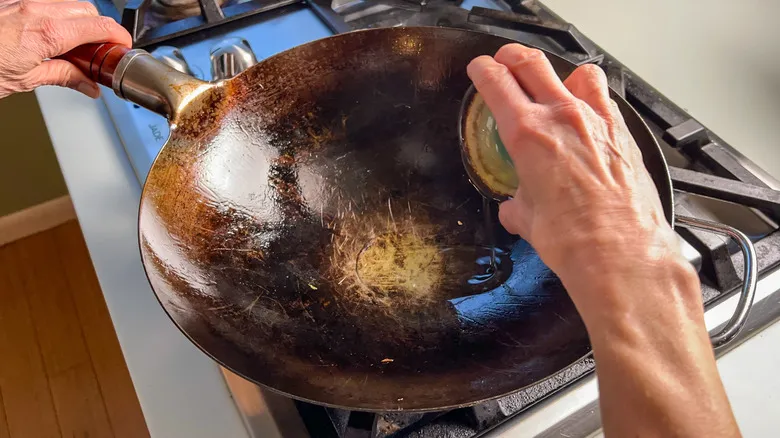
Pour 2 tablespoons of cooking oil into the wok and heat it up.
Step 17: Saute the eggplant

Incorporate the eggplant and sauté until it is charred and has shrunk in size (approximately 10 minutes). Take it out of the wok and mix it with the mushrooms.
Step 18: Saute the shrimp
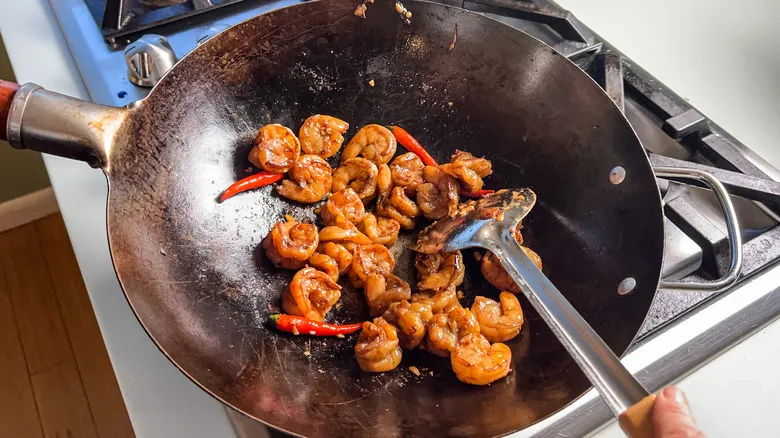
Warm the leftover tablespoon of cooking oil in the wok. Incorporate the shrimp and Thai chiles, and sauté until the shrimp turn opaque (approximately 5 minutes).
Step 19: Add udon to the wok
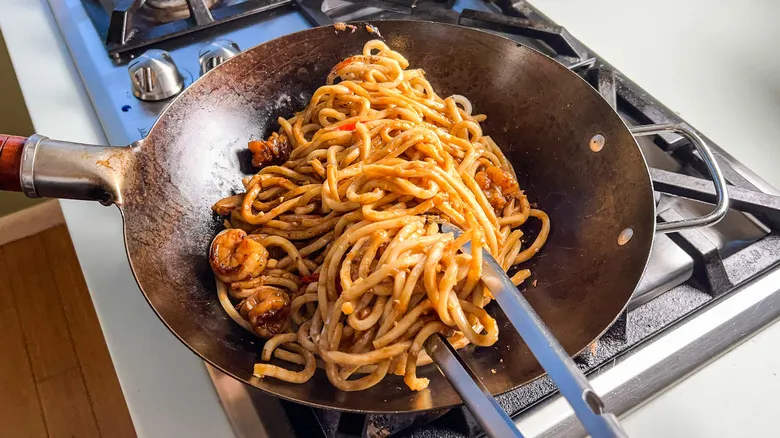
Place the udon in the wok. Sauté and stir for approximately one minute.
Step 20: Combine all of the remaining ingredients in the wok
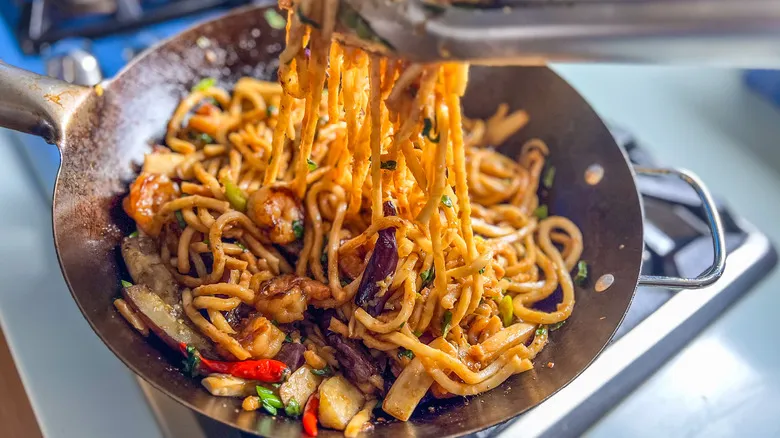
Drizzle the sauce over the noodles in the skillet. Incorporate the mushrooms, eggplant, scallions, basil, and mint. Lower the heat to medium and carefully mix the udon with the vegetables, herbs, and shrimp until everything is warmed through.
Step 21: Garnish and serve the shrimp and eggplant stir-fry
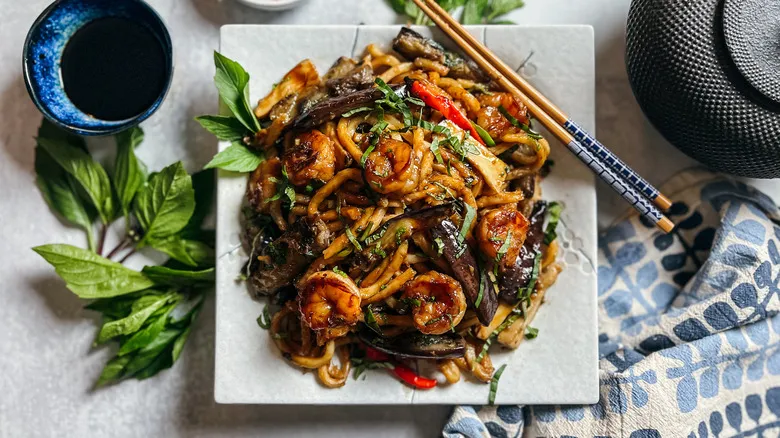
Serve the shrimp and eggplant with udon right away in warmed bowls, topped with a sprinkle of sliced basil and mint.
Can you make shrimp and eggplant stir-fry in advance?
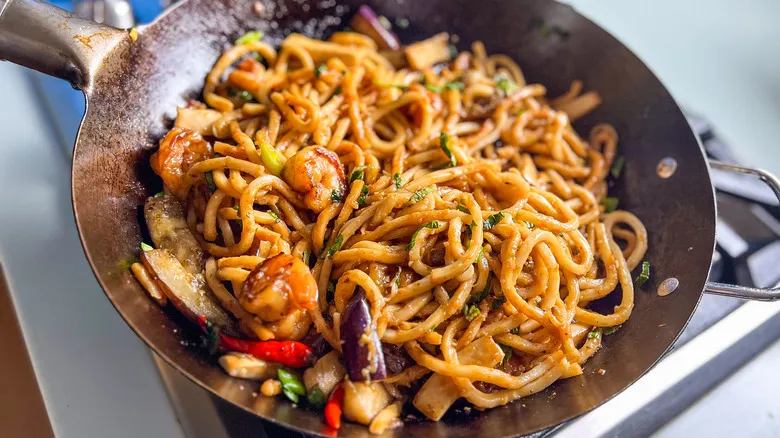
Any stir-fry is best enjoyed straight from a hot wok, but proper storage and reheating are essential for savoring every tasty leftover bite. This shrimp and eggplant stir-fry includes several steps that can be completed ahead of time, allowing for quick preparation just before serving. You can chop the eggplant and mushrooms a day in advance and store them in the refrigerator, but be sure to brine the eggplant on the day you plan to cook. The sauce can be prepared and kept for 2–3 days ahead of time. Soak and marinate the noodles up to 4 hours before cooking, and prepare your shrimp to marinate during that period as well. All components of the recipe can be ready in the wok 1–2 hours prior to serving. After adding all the ingredients to the wok, turn off the heat and wait to warm and toss everything until you're ready to enjoy your meal.
How can I switch up shrimp and eggplant stir-fry?
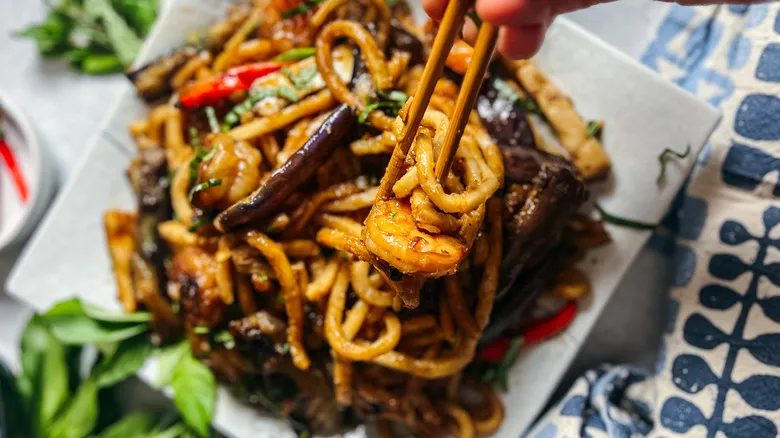
Like any great stir-fry, this recipe allows for flexibility based on your tastes and the ingredients you have available. While the combination of shrimp and eggplant offers a delightful balance of flavor and texture, you could also use thinly sliced chicken or cubed tofu for a tasty alternative. Feel free to experiment with different types of mushrooms, ranging from standard white button to shiitake or portobello. If Chinese eggplants are unavailable, Japanese or larger globe eggplants can be substituted, though they may need to be cut differently. Kinnaird notes that Chinese eggplants generally have fewer seeds and a milder, sweeter flavor compared to globe eggplants, which tend to be slightly more bitter. If you're interested in trying different noodles, consider wide rice noodles or buckwheat soba, which have a chewy texture similar to udon. Adding other vibrant vegetables, such as carrots or snow peas, can introduce a fresh element and crunch, but make sure to cut any extra ingredients to a similar size as the eggplant, mushrooms, and main protein to ensure even cooking.
Recommended

Triple Chocolate Chunk Pizookie Recipe

Comforting Ginger Chicken Jook (Rice Porridge) Recipe

Vegetarian Spaghetti 'Carbonara' Recipe

Crispy Coconut Baked Chicken Breasts Recipe
Next up

